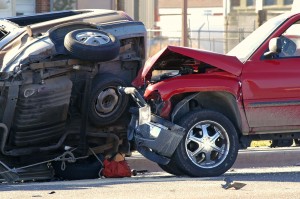A Car Accident Lawyer Can Prove That A Plaintiff Was Negligent

Assessing blame for a car accident can be difficult. The plaintiff must prove the defendant’s negligence, but even if they can do so, the defendant may be able to avoid liability with a solid defense. The contributory and comparative negligence systems are intended to handle situations where parties share blame. Shared liability handling depends on location, as some jurisdictions follow the comparative negligence system while others use the contributory negligence doctrine. Below is an explanation of these defenses and how they are used by Berman Mcgrath Law Group.
Comparative Negligence Is an Incomplete Defense
In comparative negligence, fault is allocated between parties. Under this system, used by most jurisdictions, a car accident lawyer may use an incomplete defense, alleging that the plaintiff shares blame for the accident.
Jurisdictional Rules on Comparative Negligence are Different
Rules on comparative negligence differ by location, but most jurisdictions have taken on a form of the rules described below.
* Pure comparative negligence: In these areas, victims can recover partial compensation regardless of their own degree of negligence.
* Modified negligence: In areas using a modified negligence statute, the victim’s recovery can be limited if their share of fault exceeds a certain percentage. In some cases, the victim can only receive damages if they have less blame than the defendant has.
Contributory Negligence
If one is facing a car accident lawsuit in an area that uses the contributory negligence system, they may be able to evade liability if their attorney can prove that the victim’s negligence contributed to the event. The contributory negligence doctrine effectively prevents a victim from receiving damages if the defendant can document that they were negligent. Due to its harshness, this doctrine is only followed in a few areas.
Establishing a Victim’s Negligence
To establish comparative or contributory negligence, a defendant has to prove that a plaintiff contributed to the event. Everyone on the road is legally required to use care sufficient to keep themselves and others safe. If a victim fails in this regard, they are negligent and share blame for their injuries.
Dealing with fault allocation and defenses in accident cases can be complex, and it requires the assistance of a car accident lawyer. By hiring legal representation promptly, plaintiffs and defendants can build a solid case and achieve a fair outcome. You can also like them on Facebook for more information.



